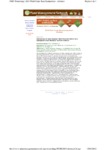Use este identificador para citar ou linkar para este item:
http://www.alice.cnptia.embrapa.br/alice/handle/doc/919008Registro completo de metadados
| Campo DC | Valor | Idioma |
|---|---|---|
| dc.contributor.author | VENANCIO, W. S. | pt_BR |
| dc.contributor.author | VENANCIO, R. M. | pt_BR |
| dc.contributor.author | MEYER, M. C. | pt_BR |
| dc.contributor.author | NUNES JUNIOR, J. | pt_BR |
| dc.contributor.author | BEGLIOMINI, E. | pt_BR |
| dc.contributor.author | JASPER, M. | pt_BR |
| dc.date.accessioned | 2012-03-15T11:11:11Z | pt_BR |
| dc.date.accessioned | 2012-03-15T11:11:11Z | pt_BR |
| dc.date.available | 2012-03-15T11:11:11Z | pt_BR |
| dc.date.available | 2012-03-15T11:11:11Z | pt_BR |
| dc.date.created | 2012-03-15 | pt_BR |
| dc.date.issued | 2011 | pt_BR |
| dc.identifier.citation | In: PLANT MANAGEMENT NETWORK; FIELD CROPS RUST SYMPOSIUM, San Antonio, 2011. Proceedings ... Saint Paul: APS: ASA: CSSA: 2011. Abstract, 24. Disponível em: < http://www.plantmanagementnetwork.org/proceedings/FCRS/2011/posters/>. | pt_BR |
| dc.identifier.uri | http://www.alice.cnptia.embrapa.br/alice/handle/doc/919008 | pt_BR |
| dc.description | The development of resistant cultivars to the Asian soybean rust (ASR), caused by Phakopsora pachyrhizi, brought an additional tool to the disease management in Brazil. ASR develops slower in resistant cultivars than in susceptible ones, allowing a reduction of the number of fungicide sprays, but chemical control is still necessary. A field trial was conducted in Ponta Grossa, Parana State, in order to compare the effects of ASR chemical control with four fungicide formulations, in both resistant (BRSGO 7560) and susceptible (CD 249 RR) soybean cultivars. The fungicides were applied twice, beginning at soybean growth stage R3?R4, when first uredinia were observed, and at soybean stage R5.3?R5.4. The fungicides used were premix formulations of pyraclostrobin + epoxiconazole + fluxapyroxad (40+64.8+40 g a.i./ha), azoxystrobin + cyproconazole (60+24 g a.i./ha), pyraclostrobin + epoxiconazole (79.8+30 g a.i./ha), and epoxiconazole (125 g a.i./ha). The ASR severity at soybean growth stage R7 on nonsprayed plots reached 75.4% on the resistant cultivar and 98.6% on the susceptible cultivar. Lower ASR severity index were observed in the resistant cultivar, with the treatments pyraclostrobin + epoxiconazole (9.8%), pyraclostrobin + epoxiconazole + fluxapyroxad (10.5%), and azoxystrobin + cyproconazole (10.9%), with an average of disease control ranging from 90.8 to 91.3%. The treatments with pyraclostrobin + epoxiconazole and pyraclostrobin + epoxiconazole + fluxapyroxad provided the lower yield reductions on both soybean cultivars. The yield and grain weight reductions in the nonsprayed treatment were 32 and 28%, respectively, on the resistant cultivar and 44 and 32%, respectively, on the susceptible cultivar. | pt_BR |
| dc.language.iso | eng | eng |
| dc.rights | openAccess | eng |
| dc.title | Comparison of asian soybean rust chemical control on a susceptible and a resistant cultivar in Brazil. | pt_BR |
| dc.type | Resumo em anais e proceedings | pt_BR |
| dc.date.updated | 2013-06-11T11:11:11Z | pt_BR |
| dc.subject.thesagro | Soja | pt_BR |
| dc.subject.thesagro | Doença de planta | pt_BR |
| dc.subject.thesagro | Ferrugem | pt_BR |
| dc.subject.thesagro | Doença fúngica | pt_BR |
| dc.subject.thesagro | Phakopsora Pachyrhizi | pt_BR |
| dc.subject.nalthesaurus | Soybeans | pt_BR |
| dc.subject.nalthesaurus | Plant diseases and disorders | pt_BR |
| riaa.ainfo.id | 919008 | pt_BR |
| riaa.ainfo.lastupdate | 2013-06-11 | pt_BR |
| dc.contributor.institution | W. S. VENANCIO, EEACG/UEPG, Ponta Grossa, PR, Brazil | pt_BR |
| dc.contributor.institution | R. M. VENANCIO, CESCAGE - Ponta Grossa, PR | eng |
| dc.contributor.institution | MAURICIO CONRADO MEYER, CNPSO | eng |
| dc.contributor.institution | J. NUNES JUNIOR, CTPA - Goiânia, GO. | eng |
| dc.contributor.institution | E. BEGLIOMINI, BASF, Singapura. | eng |
| dc.contributor.institution | M. JASPER, CESCAGE - Ponta Grossa, PR. | eng |
| Aparece nas coleções: | Resumo em anais de congresso (CNPSO)  | |
Arquivos associados a este item:
| Arquivo | Descrição | Tamanho | Formato | |
|---|---|---|---|---|
| comparison.fielcropssymposium.2011.pdf | 37,2 kB | Adobe PDF |  Visualizar/Abrir |









